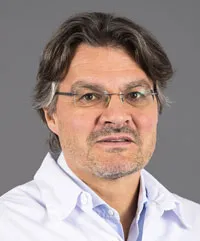How should you prepare for your discharge?
It is possible that you will be discharged as early as the fifth day after the operation at 11 a.m. It is preferable that one of your family members be present for your return home. They can also accompany you over the next few days to your appointments.
Depending on your health status, the doctor may prescribe a home-based carer (for cleaning, meals, etc.) in collaboration with the Geneva Home Assistance Institution (Institution genevoise de maintien à domicile (imad)).
At the time of your discharge, the health care team will give you a file, including the medical certificate, prescriptions, the discharge notice and your outpatient appointments at the HUG for your bandages.
DID YOU KNOW?
After your discharge, you may be contacted by the Infection Prevention and Control Service as part of the Swiss Surgical Wound Care Program.
How should you care for your scar?
If the surgeon used sutures, they will be removed as early as the 8th post-operative day, depending on the condition of the wound (about 3 days after your discharge) or on the 14th day if this is a repeat intervention. Once the sutures are removed, you no longer need a bandage and you can take showers, but no baths for one month after the intervention.
If the surgeon used glue (Dermabond Prineo), you can shower because this transparent dressing is waterproof. This is left in place for 14 days. In case the glue on the dressing detaches, contact your neurosurgeon for a wound check. The dressing and the remaining glue will be detached during your consultation appointment at the hospital. You may not take baths for one month after the intervention. After this, avoid rubbing or scratching the scar. Do not apply any ointment, cream or oil to this area.
“I went home after six days. During the first month, the pain was severe, especially in my right leg, and it sometimes wouldn’t let me sleep. We tried several analgesics, but what gave me the best relief was to put a bag of ice on my leg and move. Little by little, the pain subsided.”
Marc, 55 years old
What happens next?
Good daily behavior
This is essential for your recovery. For the first six to twelve weeks after the operation, follow the advice given to you by the physical therapists, as follows:
- do the exercises you learned at the hospital every day
- turn on your side in one movement and straighten up, keeping your back straight when you get up from the bed
- keep your back straight, without twisting or flexing the lumbar or cervical region, while doing your variousa ctivities of daily life (washing yourself, getting dressed, cleaning, cooking, etc.)
- use a cup to brush your teeth
- walk, but avoid rough terrain
- avoid sudden back movements and do not wear shoes with heels higher than 5 cm
- carry loads as close to your body as possible, and they should not weigh more than five kilos
- avoid sitting too low (sofa)
- stay lying on your back during sexual activities.
Good daily behavior
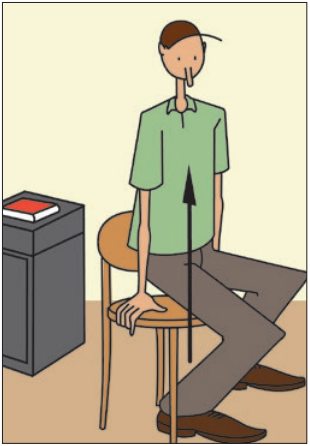
Stand up, back straight, to pick up an item behind you
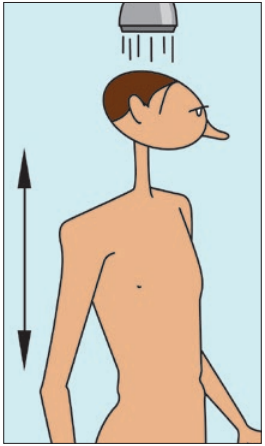
Keep standing while you shower
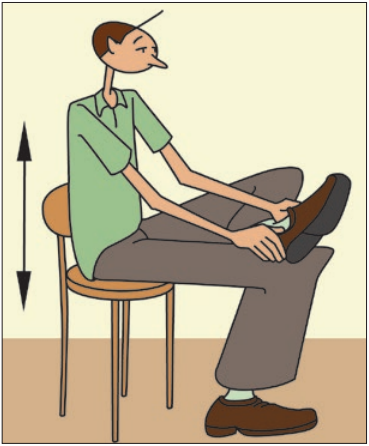
Remain seated to put on your shoes
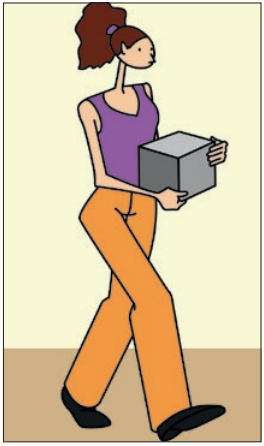
Carry a weight less than 5kg pressed against you
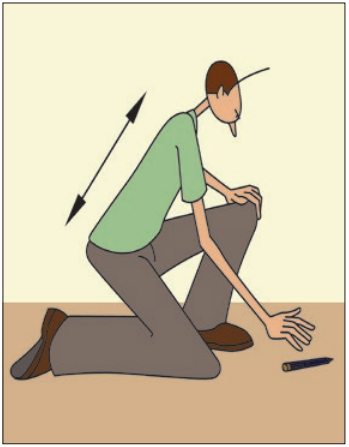
Bend your legs to pick up an item from the ground
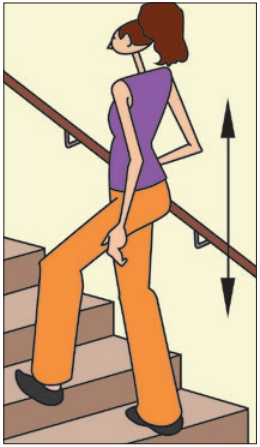
Keep your back straight
“I returned to full-time work after two months, after getting medical advice. At home and at work, I adapted my movements because my mobility and flexibility are no longer the same as they were before. I bought a dishwasher and I get help when I have to carry heavy loads. But now I can be on my feet for several hours without pain and I walk an average of 6.5 km per day. The important thing is to keep moving.”
Marc, 55 years old
Resuming activities
You may not drive your vehicle for the first four to eight weeks after your discharge from the hospital. You can resume driving when you are comfortable in a sitting position again and it does not cause any pain.
In the meantime, you can travel as a passenger for short trips by car or public transport. If you need to take a longer trip, we recommend that you make frequent stops to rest and change position.
Resuming your work activities and sports will be determined based on the progress of your health status and according to medical advice. You will be on sick leave for a period of 6 to 12 weeks.
Move, but follow the instructions you were given.
Your follow-up visit
Four to twelve weeks after the procedure, you will see your neurosurgeon in a consultation for a follow-up check. This appointment will be set up during your discharge and sent to your home by the Neurosurgery administrative office for you to confirm it.
During this visit, a radiological check will be carried out and a physical therapy program will be set up.
Hospitalization costs
The hospitalization is covered by basic health insurance (LAMal) after deducting the deductible and co-pay (10% of the costs that must be paid by you).
